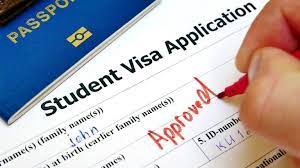The United States attracts millions of visitors, immigrants, and temporary workers each year. Whether you’re planning a vacation, pursuing higher education, or seeking job opportunities, understanding the US visa process is crucial. Navigating through the myriad of visa categories, application procedures, and eligibility criteria can be daunting. To alleviate confusion and streamline your journey, we’ve compiled this comprehensive FAQ guide to address common queries and provide clarity on the US visa process. US VISA FAQ
- What types of visas are available for traveling to the US?
The US offers a variety of visas tailored to different purposes, including tourist visas (B-1/B-2), student visas (F-1), work visas (H-1B), exchange visitor visas (J-1), and many more. Each visa type serves specific intentions, such as tourism, education, employment, or cultural exchange. Understanding the purpose of your visit is essential in determining the appropriate visa category.
- How do I apply for a US visa?
The application process typically begins with completing the online visa application form (DS-160) available on the US Department of State’s website. Afterward, applicants must schedule and attend a visa interview at the nearest US embassy or consulate in their home country. Additionally, applicants may be required to pay the visa application fee and provide supporting documents, such as a valid passport, photograph, and proof of financial means.
- What documents are required for a US visa application?
The specific documents needed vary depending on the type of visa you’re applying for. However, common requirements include a valid passport, completed visa application form (DS-160), passport-sized photographs, proof of financial stability, travel itinerary, and supporting documents relevant to your visa category (e.g., acceptance letter from a US university for student visas, employment offer letter for work visas). REASONS FOR ESTA VISA DENIAL
- How long does it take to process a US visa?
The processing time for a US visa application can vary widely depending on factors such as the type of visa, the volume of applications, and the applicant’s individual circumstances. Generally, non-immigrant visa applications are processed within a few weeks, while immigrant visa applications may take several months to years to process. It’s advisable to apply for a US visa well in advance of your intended travel date to account for processing times and any potential delays.
- What is the visa interview process like?
The visa interview is a crucial step in the application process and is conducted at the US embassy or consulate. During the interview, a consular officer will ask questions to assess the applicant’s eligibility and intention for visiting the US. It’s essential to be honest, concise, and prepared to provide relevant information about your travel plans, ties to your home country, and ability to support yourself financially during your stay in the US.
- How can I increase my chances of getting approved for a US visa?
While there’s no guaranteed formula for visa approval, certain strategies can improve your chances of success. These include thoroughly preparing for the visa interview, providing accurate and complete documentation, demonstrating strong ties to your home country (such as family, employment, or property ownership), and articulating a clear and legitimate purpose for your visit to the US.
- Can I appeal a visa denial?
In most cases, visa denials cannot be appealed. However, applicants have the option to reapply for a visa if their circumstances have changed or if they believe the initial denial was based on a misunderstanding. It’s essential to carefully review the reasons for the denial and address any deficiencies or concerns before reapplying.
- How long can I stay in the US on a visa?
The duration of stay permitted on a US visa varies depending on the visa category and the terms specified by the consular officer during the visa interview. Tourist visas (B-1/B-2) typically allow for stays of up to six months per visit, while student visas (F-1) and work visas (H-1B) may permit longer stays based on the duration of the academic program or employment contract.
- Can I work in the US on a tourist visa?
No, a tourist visa (B-1/B-2) does not permit employment in the United States. Visitors traveling on a tourist visa are strictly prohibited from engaging in any form of paid employment or business activities. However, certain visa categories, such as work visas (H-1B) and exchange visitor visas (J-1), allow for temporary employment in the US under specific conditions and authorization.
- What should I do if my visa expires while I’m in the US?
It’s essential to adhere to the terms and conditions of your visa to avoid overstaying your permitted duration of stay in the US. If your visa expires while you’re in the US, you may be subject to deportation or other immigration consequences. To extend your stay or change your immigration status, you should consult with an immigration attorney or contact the nearest US Citizenship and Immigration Services (USCIS) office for guidance.
Conclusion
Navigating the US visa process can be complex, but armed with the right information and guidance, you can successfully obtain a visa for your intended purpose. By understanding the different visa categories, fulfilling application requirements, and preparing thoroughly for the visa interview, you can maximize your chances of securing approval and embarking on your journey to the United States with confidence. Remember to stay informed, plan ahead, and seek assistance when needed to ensure a smooth and hassle-free visa application experience.

